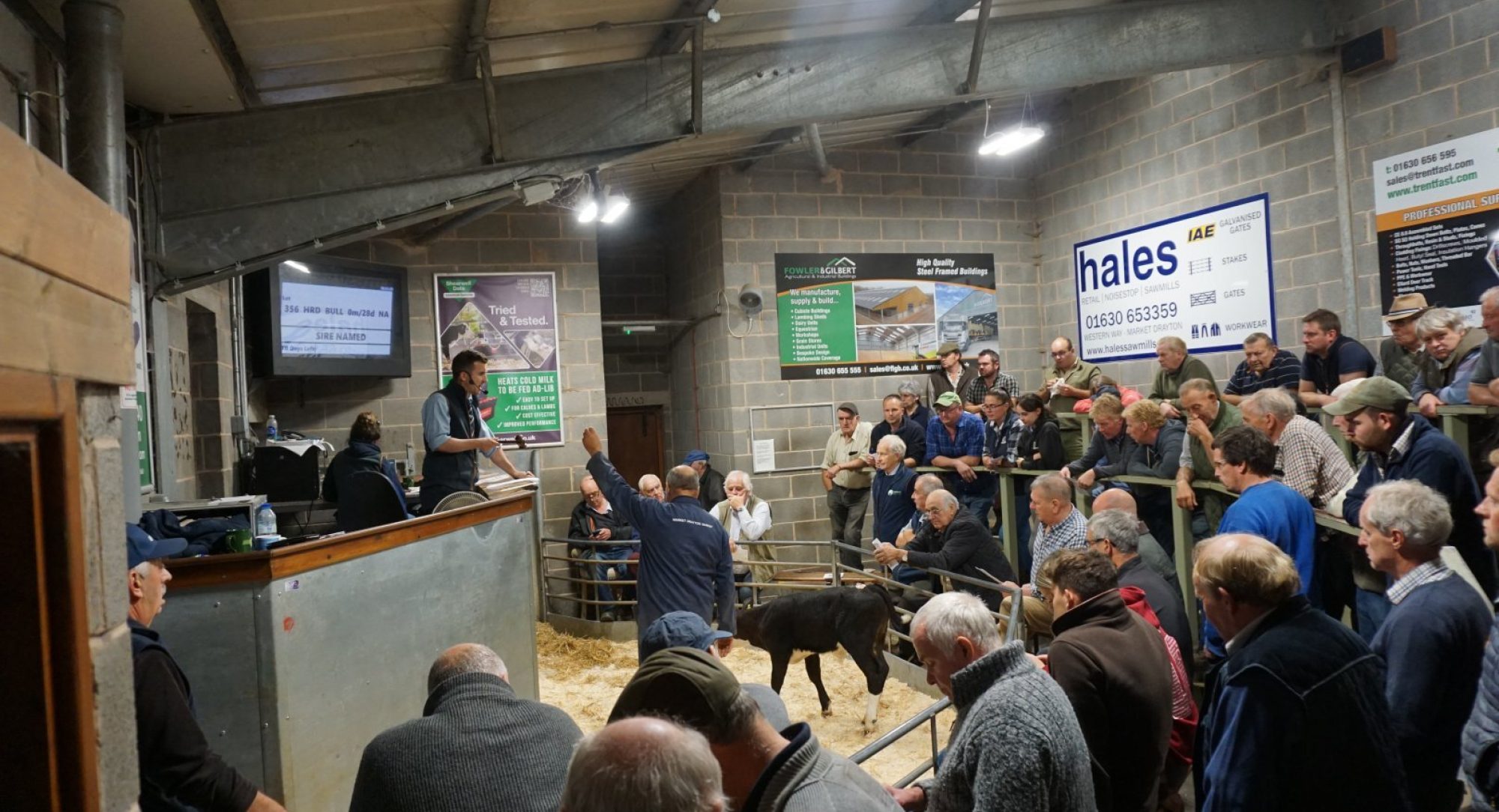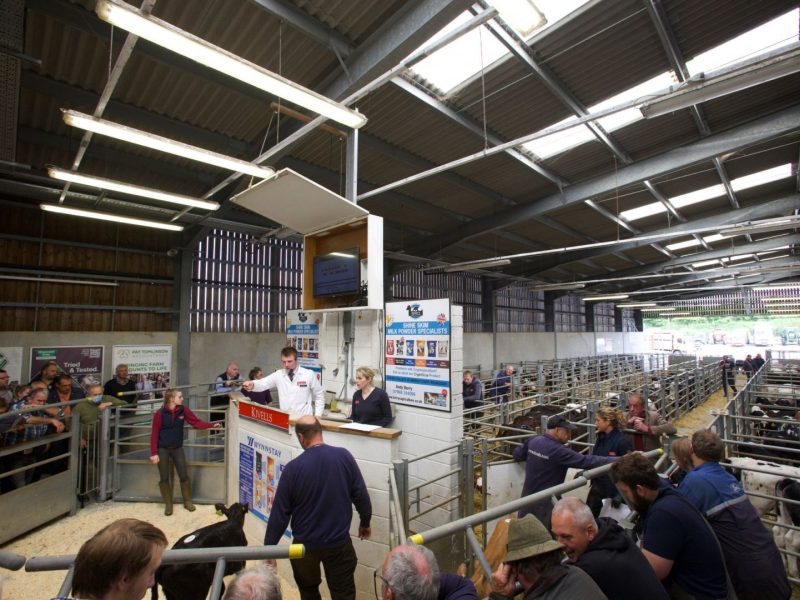As the dairy industry embraces the second GB Calf Week, highlighting progress in ensuring dairy-bred calves are reared with care and purpose as part of the dairy or beef supply chain, dairy calf producers are being urged to carefully select marketing routes to ensure the right calves are reaching the right outlet.
“There is a current imbalance in supply and demand, and direct supply chains are not fully providing for calf producers, while the live sales ring continues to offer a market for every calf,” says Market Drayton Market auctioneer Jonty Cliffe.
Markets are seeing more calves than ever, with the live sales ring providing a marketplace for all types, breeds and ages of calves, to meet all budgets.
“Providing a weekly outlet for calf producers, the livestock market works in all circumstances. Our producers are not limited by a grid system or categorisation by weight or whether their stock has made the grade,” adds Jonty.
As the largest viable marketing route on offer for producers of dairy bred calves, in excess of 230,000 calves were sold through livestock markets across England and Wales in the last year, with that number rising year on year.
This is only sustainable by ensuring the right buyers are around the ring, and this is where the open channels of communication between the auctioneer and vendor is crucial, matching requirements of buyers from across both the beef and dairy supply chains.
“Auctioneers will always liaise with all of the relevant buyers, ensuring the right people are around the ringside for your type of livestock, to achieve the best possible price,” explains Will Alexander of Bentham Auction Mart.
“This ensures the true value of the calf is achieved on the day, from the top-end heavy Angus bulls to the 2 to 4-week-old calves. It is in our own interests, quite simply the more the calf makes, the more commission the auctioneer earns,” he adds.
The auction system is the only marketplace that works for the farmer in this respect, while direct supply chains will seek to control prices for their own benefit.
Of course, this requires a two-way line of communication, with calf producers encouraged to speak to their auctioneer in advance of presenting livestock for sale, for the best possible experience.
“We are never going to turn you away, but can guide on best times to market your calves and advise on current market demands,” explains Tim Kivell, calf auctioneer with Kivells at Holsworthy Market. “It is not always about age or having a named sire, there is always an outlet. No calf is turned away for being out of spec.”


